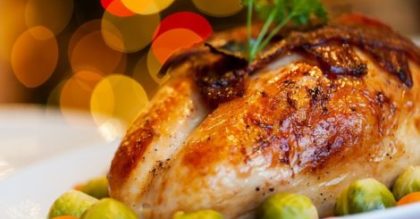
Tomorrow is Thanksgiving in the United States, a time for gratitude and community. Intangible qualities like these challenge science, since they don’t lend themselves as readily to quantifying or to controlled investigation. Much easier for a scientist to tackle topics like tryptophan in turkey–no, that’s not what makes you drowsy after dinner–because we have better tools for studying molecules. That doesn’t mean gratitude or community aren’t real or significant to our lives, just that we need different tools to study them.
Although not directly related to gratitude, this recent article about the placebo effect explores why science struggles with intangibles, leading to a tendency to minimize them or box them off. If you’re not familiar, the placebo effect is the observation that some patients will experience measurable, physiological improvement in health even when they are treated in a way that has no appreciable mechanism for providing benefit. The quintessential placebo is a sugar pill, but there’s a whole range of variants. As the article explains, the placebo has become a staple of biomedical research; whenever you are testing a new drug or surgery or other therapy, you often need to randomly administer a placebo to some fraction of patients and demonstrate that the therapy of interest does more benefit than the placebo. A key part is that nobody–neither patient nor physician–knows who is getting what, so the placebo must closely resemble the tested therapy, hence the variety.
The logic is pretty straightforward. There is some baseline of patients who will just get better anyway without the specific benefit of the targeted therapy. So you can’t just show that your targeted therapy makes some people healthier, you need to show that it makes more people healthier than if you had done nothing. Except placebos aren’t actually nothing. And they don’t exactly represent a baseline, at least in the sense that not all placebos are created equal. The color of the pill can affect the patient’s physiological response, as can the price and whether it is an injection or a pill. Americans react differently than Europeans, and all of us seem to respond more strongly to placebos now than we used to. Fun facts like these might make for some interesting Thanksgiving table conversation; they also make for quite the puzzle.
The article suggests that the very act of treatment–the doctor-patient interactions, the rituals of healthcare–have something to do with the placebo effect. I took that to mean that our bodies can respond positively to care in general in addition to targeted therapeutics. That’s a new way of looking at the placebo effect, at least for me. And it got me thinking about things like prayer and even hospitality. Maybe that’s one way that prayer brings healing; it’s an act of caring that can trigger the same physiological response as interacting with a physician. That’s not to exclude a response from God to those prayers as a factor in healing as well, or to suggest all one will ever need is care without specific medicines or other interventions. Just trying to look at health and healing from all the angles. And if rituals of care, can have positive effects, how far does that extend? Does the ritual of preparing and serving an elaborate meal like Thanksgiving dinner provide some benefit, or does there have to be an established association with health? Might be interesting to test, and tasty too.
Happy Thanksgiving!
Andy has worn many hats in his life. He knows this is a dreadfully clichéd notion, but since it is also literally true he uses it anyway. Among his current metaphorical hats: husband of one wife, father of two teenagers, reader of science fiction and science fact, enthusiast of contemporary symphonic music, and chief science officer. Previous metaphorical hats include: comp bio postdoc, molecular biology grad student, InterVarsity chapter president (that one came with a literal hat), music store clerk, house painter, and mosquito trapper. Among his more unique literal hats: British bobby, captain’s hats (of varying levels of authenticity) of several specific vessels, a deerstalker from 221B Baker St, and a railroad engineer’s cap. His monthly Science in Review is drawn from his weekly Science Corner posts — Wednesdays, 8am (Eastern) on the Emerging Scholars Network Blog. His book Faith across the Multiverse is available from Hendrickson.

Leave a Reply